Trial 2: Effect of Char Level on Extraction Rates in New Oak Maturation
By Andrew Wiehebrink, R&D Spirits Division
Introduction
The first few years of maturation are the most active for the influx of barrel- derived flavor compounds into the aging spirit. Normally, producers have the choice of four different char levels for new barrels. The degree of char can alter the rate of extraction in new oak maturation.
Objective
The purpose of this experiment is to examine the effect of different char levels on new oak extraction rates during the first two years of maturation.
Methods
Base Liquid
Variety: New make bourbon distillate
Mash Bill: 70% corn/20% rye/10% malted barley
Entry Proof: 120 proof/60% ABV
Trial Execution
Entry Date: February 2019
Primary Maturation Period: 24 months
Warehouse Location: Kentucky
The Trial
New make bourbon distillate filled in the following barrels:
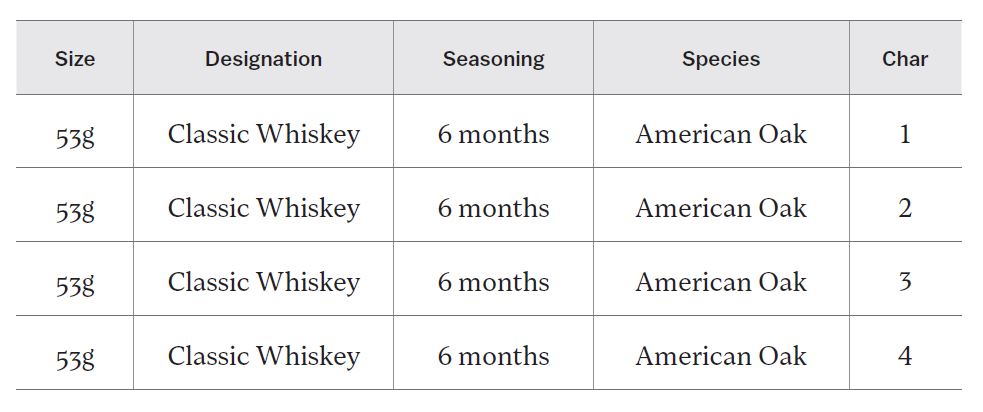
Six barrels of each variation were included in the experiment.
Samples were taken from each barrel at 12 and 24 months and then analyzed using Gas Chromatography-Mass Spectrometry (GCMS). All compound concentrations are displayed in graphs either as a percentage of the average concentration across all barrels in the experiment or concentration in mg/L.
Results and Discussion
Figure 2.1 shows the change in concentration for a select group of key extractives for both Char #1 and Char #4 variations over two years.
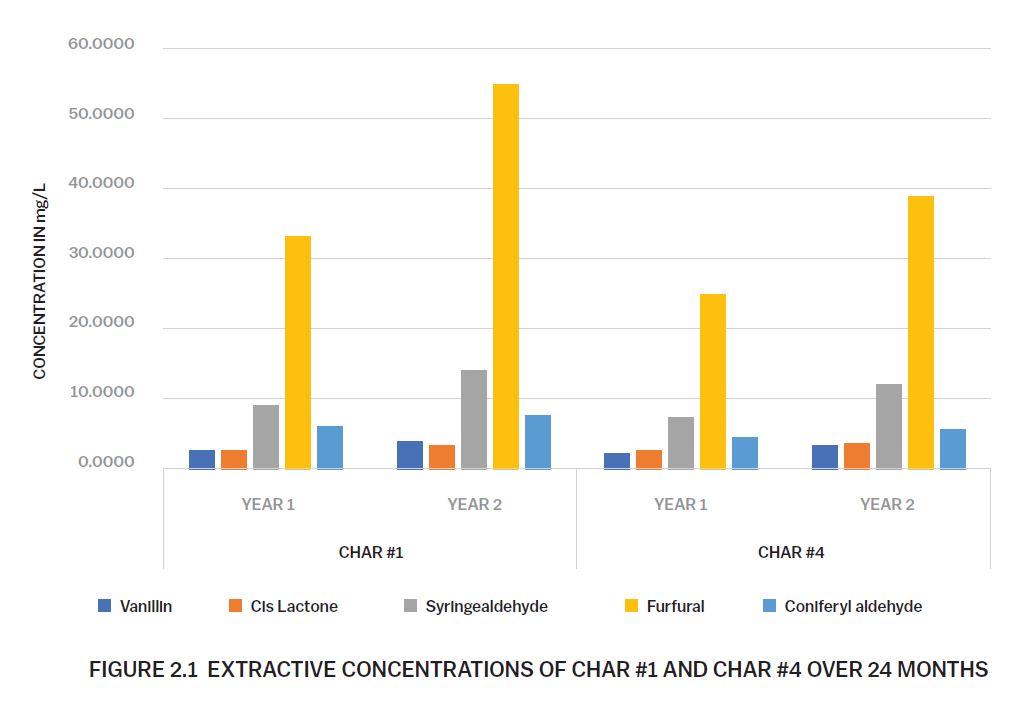
The results of this experiment showed the different char levels displayed different extraction rates, with the extraction rate inversely proportional to char level. From year one to year two, the Char #1 variant gained a total of 30.31 mg/L in total extractive concentration. In that same time period, the Char #4 variant gained a total of 22.55 mg/L in total extractive concentration. It is of note that while the extractive concentration changed between Char #1 and Char #4, the resulting overall flavor profile did not show much difference. See Figure 2.2 below. The overall shape of both spider graphs are similar, which indicates a similar balance of extractives; however, Char #1 exhibited a higher overall concentration.
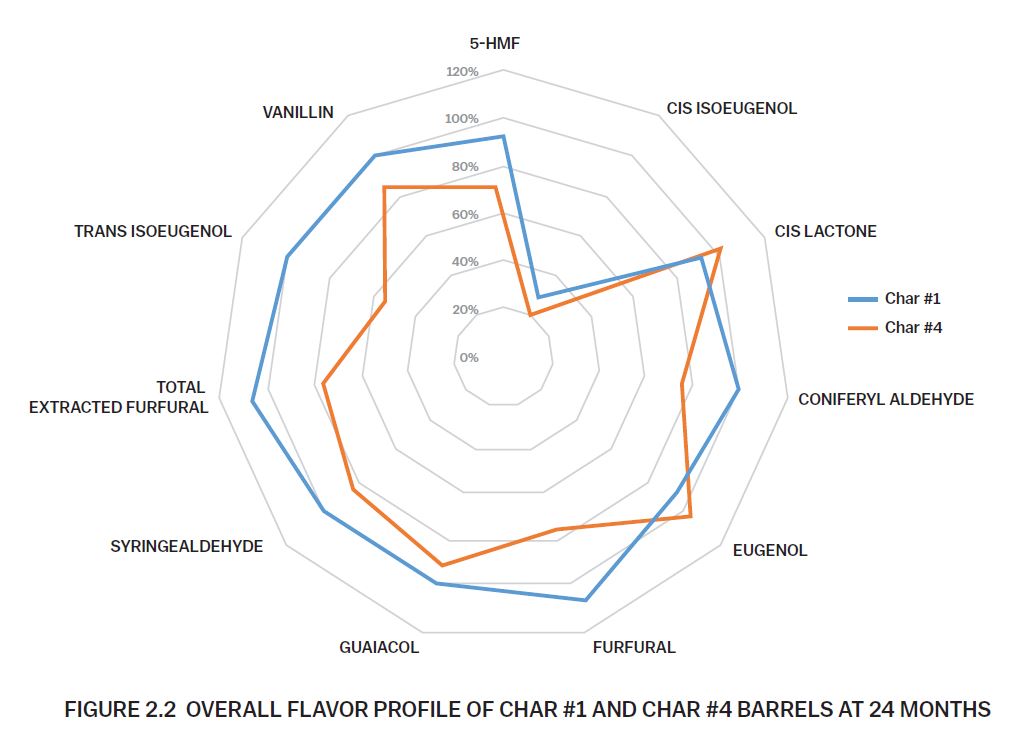
Difference in extraction rates undoubtedly affect the overall flavor concentrations during the first few years of maturation. The discrepancy in extractive concentration will also influence the color of the final product. See Table 2.1 below.
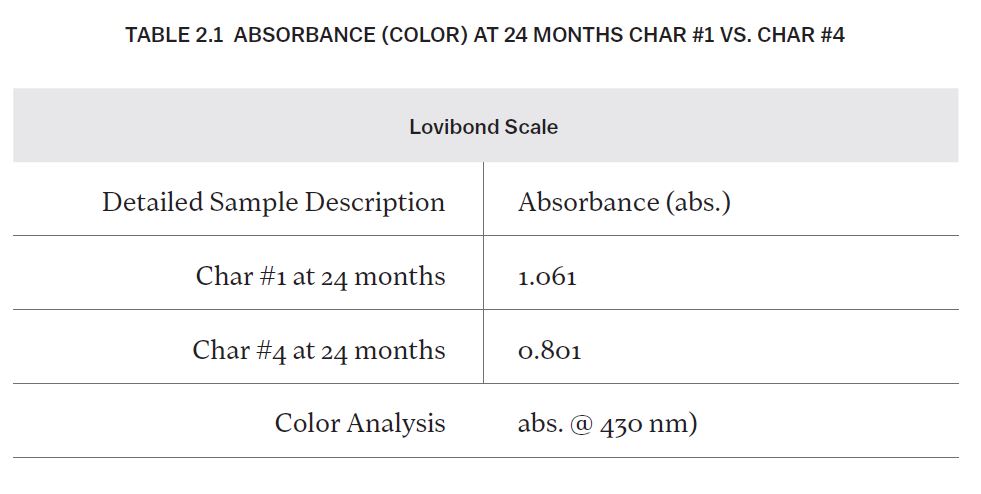
The higher absorbance reading of 1.061 indicates that the Char #1 variant is darker in color than the Char #4 variant. A difference of .26 on the Lovibond scale is detectable by the naked eye.
Conclusions
This experiment demonstrated that altering char level has more of an effect on the extraction rate than overall flavor profile. The impact on extraction rate as it relates to level of char included the following:
- Lower char level increased the overall extraction rate, which can likely be attributed to a thinner char layer. This reduces subtraction and provides easier access to the red layer by positioning the red layer closer to the inner surface of the stave.
- Lower char levels can produce spirits that are darker in color due to an increase in extraction rate and preservation of sweet flavor components, which appear as darker in alcohol solutions.
Books are available through your account manager.

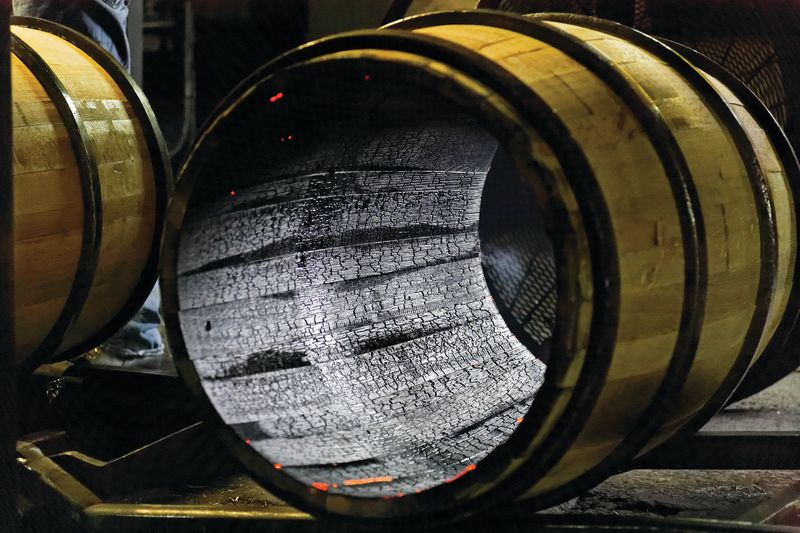
Comments 1
Dear Andrew . How are you doing?
I’m Marcelo Falcão, from Premier Pack.
Very interisting your article. It was a surprise for me.
Could you explain me what does mean the “red layer”? Would it be the oak?
Many thanks